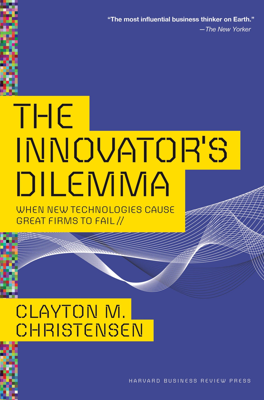Discovering New and Emerging Markets
Discovering New and Emerging Markets
Markets that do not exist cannot be analyzed, and suppliers and customers must discover them together. Disruptive technologies require plans for learning and discovery rather than execution, as their market applications are unknown at development time. Understanding this principle helps managers approach market strategies effectively.
Forecasting Markets for Sustaining vs. Disruptive Technologies
Disk/Trend Report: This report tracks disk drive industry data and forecasts market performance. It shows that forecasts for sustaining technologies are often accurate, but forecasts for disruptive innovations are less precise.
- Sustaining Innovations: Accurate forecasts for 14-inch Winchester and 2.5-inch drives.
- Disruptive Innovations: Significant forecasting errors for 5.25-, 3.5-, and 1.8-inch drives.
Identifying New Markets
- HP 1.3-inch Kittyhawk Drive: HP anticipated a large market in PDAs for their Kittyhawk drive, but the PDA market underperformed. Eventually, they discovered other applications in video games and other electronics, but it was too late to capitalize effectively.
Case Studies
Honda's Entry into North American Market:
- Honda initially targeted the high-end motorcycle market but faced technical failures.
- Discovering the off-road market for small bikes like the Supercub was serendipitous, leading to a successful strategy in creating a new value network.
Intel and Microprocessors:
- Intel’s entry into the microprocessor market was initially unguided, with no explicit strategy.
- Internal resource allocation shifted due to declining DRAM margins, gradually focusing on microprocessors.
- The true value and application of microprocessors were discovered over time, highlighting the unpredictability of disruptive technologies.
Unpredictability and Managerial Response
- Inherent Uncertainty: Disruptive technology markets are unpredictable, making initial strategies often incorrect.
- Resource Allocation: Successful ventures don’t rely on a perfect original strategy but retain enough resources to adapt through multiple trials and errors.
Plans for Learning vs. Plans to Execute
- Disruptive technologies require flexibility and iterative learning: Plans should focus on identifying crucial market information and testing assumptions before making large investments.
- Discovery-driven planning: This approach emphasizes flexible, modular production capacities and adaptive product designs, as seen in the HP Kittyhawk case.
Conclusion
Managers should approach disruptive technologies with agnostic marketing and discovery-driven planning. By focusing on learning and adaptability, companies can better navigate and succeed in creating new markets.
